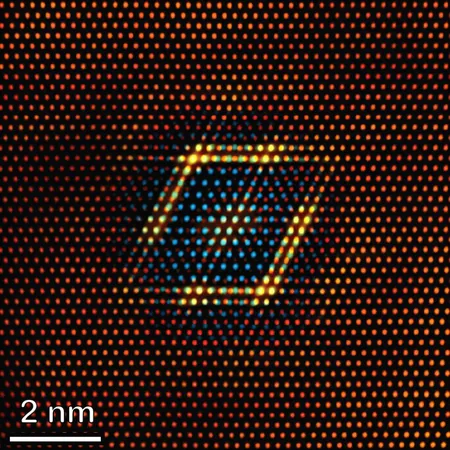
Shocking Discovery: The North American Continent is Sinking Into the Earth!
2025-04-02
Author: Li
Shocking Discovery: The North American Continent is Sinking Into the Earth!
In an astonishing revelation, researchers from The University of Texas at Austin have unveiled a surprising phenomenon: the underside of the North American continent is currently dripping away into the Earth’s mantle in clusters of rock. This groundbreaking discovery points to remnants of a tectonic plate steadily sinking beneath the surface as a potential cause of this unusual occurrence.
The study, published in the reputable journal Nature Geoscience, marks a monumental step in our understanding of tectonic activity. Lead researcher Junlin Hua, who conducted this study during a postdoctoral fellowship at UT’s Jackson School of Geosciences, expressed the excitement surrounding their findings. “We made the observation that there could be something beneath the craton,” Hua stated, adding that this new insight sheds light on the previously enigmatic process of “cratonic thinning.”
Cratons, the ancient geological cores of continents known for their stability and longevity, sometimes experience significant transformations that can influence their structural integrity, including loss of rock layers. A historical example of this is the North China Craton, which lost layers millions of years ago.
What makes this current discovery significant is that the cratonic dripping is happening in real-time, allowing scientists to observe how the thinning process unfolds. This phenomenon appears to be concentrated in the Midwest region of the United States. Fortunately, the researchers emphasize that there is no immediate cause for alarm; these geological processes unfold over extremely long timescales and are unlikely to drastically alter the landscape in the near future.
The slow dynamics of the mantle are influencing the evolution of tectonic plates, though the researchers predict that this dripping will cease as the remnants of the submerged plate sink further into the mantle.
This research is particularly exciting for geoscientists studying continental development over geological time. Thorsten Becker, a co-author and a prominent professor at the Jackson School, highlight the study's significance in understanding how continents form, fracture, and are recycled into the Earth. Becker stated, “This sort of observation is critical if we want to understand the long-term evolution of our planet.”
The dripping discovery stemmed from a larger project using a state-of-the-art, full-waveform seismic tomographic model of North America. This innovative approach allowed researchers to capture key details about the geologic processes beneath the continent, revealing complex interactions between the crust and mantle. The insights gleaned from seismic data gathered by the EarthScope project were vital to painting a clearer picture of these ongoing geological shifts.
A striking finding from the study is that the Farallon Plate, an oceanic tectonic plate that has been subducting beneath North America for approximately 200 million years, is likely driving the current dripping event. The study indicates that, despite being about 600 kilometers away from the craton, the Farallon Plate contributes to eroding the continent from below by altering mantle material flow and releasing volatile compounds that weaken the craton's foundation.
While this dripping effect is particularly visible in a focused region, Hua noted that the influence of the Farallon Plate appears to affect a broader area, impacting regions across the vast expanse of the North American craton.
To support their findings, the researchers constructed a computer model showcasing these dynamic geological interactions. When the Farallon Plate was included in the simulation, dripping occurred; without it, the dripping phenomenon ceased entirely. Becker acknowledged that while computer models have built-in limitations, the striking resemblance between the model outcomes and the real data supports the validity of their findings.
This groundbreaking research, funded by the National Science Foundation, deepens our understanding of complex geological processes and hints at the ever-changing nature of our planet. As scientists continue to study the implications of this discovery, the world watches with eager anticipation for what new insights will emerge about the forces that shape our Earth.
Conclusion
For more intriguing developments in geology and the mysteries of the planet, stay tuned!



 Brasil (PT)
Brasil (PT)
 Canada (EN)
Canada (EN)
 Chile (ES)
Chile (ES)
 Česko (CS)
Česko (CS)
 대한민국 (KO)
대한민국 (KO)
 España (ES)
España (ES)
 France (FR)
France (FR)
 Hong Kong (EN)
Hong Kong (EN)
 Italia (IT)
Italia (IT)
 日本 (JA)
日本 (JA)
 Magyarország (HU)
Magyarország (HU)
 Norge (NO)
Norge (NO)
 Polska (PL)
Polska (PL)
 Schweiz (DE)
Schweiz (DE)
 Singapore (EN)
Singapore (EN)
 Sverige (SV)
Sverige (SV)
 Suomi (FI)
Suomi (FI)
 Türkiye (TR)
Türkiye (TR)
 الإمارات العربية المتحدة (AR)
الإمارات العربية المتحدة (AR)